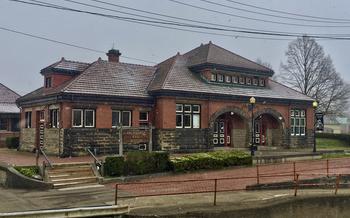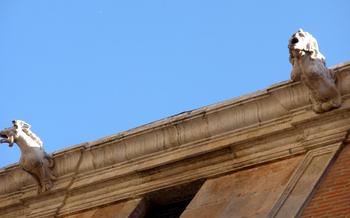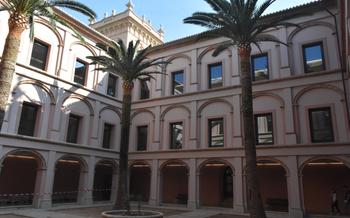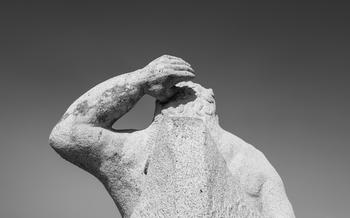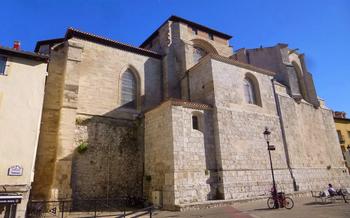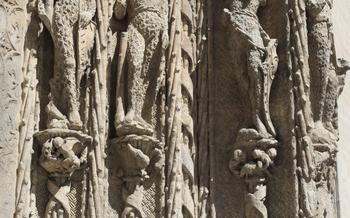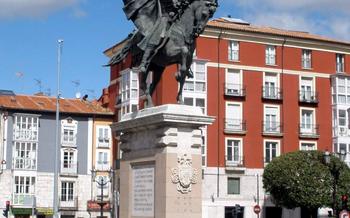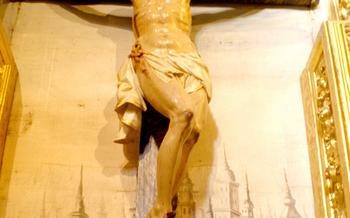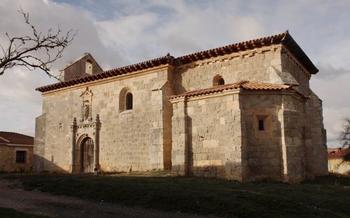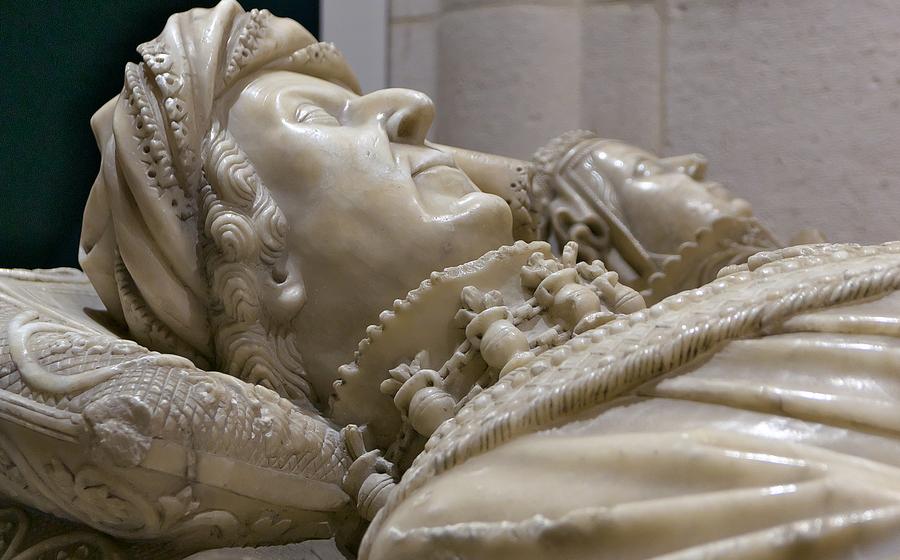
Museo de Burgos
- The Museo de Burgos: A Treasure Trove of Art and History
- Location and Accessibility:
- Hours of Operation and Admission Fees:
- The Museum's Collections
- Prehistoric and Roman Artifacts
- Medieval Art and Architecture
- Renaissance and Baroque Masterpieces
- Contemporary Art and Modernism
- Guided Tours and Educational Programs
- Accessibility for Visitors with Disabilities
- Photography and Social Media
- Nearby Attractions and Points of Interest
- Planning Your Visit
The Museo de Burgos: A Treasure Trove of Art and History
The Museo de Burgos, housed in a former palace, is a captivating repository of art and history, preserving and showcasing the cultural heritage of Burgos. Its diverse collection spans prehistoric artifacts, medieval sculptures, Renaissance paintings, contemporary art, and more, offering visitors a comprehensive journey through the region's rich past and vibrant artistic traditions. This article will guide you through the museum's highlights, providing practical information, historical context, and insider tips to ensure an enriching and memorable visit.
Location and Accessibility:
Situated in the heart of Burgos, the Museo de Burgos can be easily found at Plaza del Museo nº To reach the museum, visitors can take advantage of the city's comprehensive public transportation system. The nearest bus stop, "Museo", is just a short walk away, making the museum readily accessible. Alternatively, those arriving by car can utilize the nearby parking facilities, ensuring a convenient visit.
The Museo de Burgos stands in close proximity to other notable attractions in the city. A leisurely stroll from the museum leads visitors to the awe-inspiring Burgos Cathedral, a UNESCO World Heritage Site renowned for its Gothic architecture. The Plaza Mayor, Burgos' main square, is also within easy reach, offering a vibrant atmosphere with its lively cafés and shops. Moreover, the delightful Paseo del Espolón, a picturesque promenade lined with trees, is just a short walk away, providing an idyllic spot for a relaxing stroll.
Hours of Operation and Admission Fees:
The Museo de Burgos welcomes visitors from Tuesday to Sunday, with varying hours depending on the day of the week: - Tuesday to Friday: 10:00 AM to 6:00 PM - Saturday: 10:00 AM to 7:00 PM - Sunday and holidays: 10:00 AM to 2:00 PM
The museum is closed on Mondays, December 25th, and January 1st.
Admission Fees:
- General Admission: €5
- Reduced Admission (Seniors, students, and groups of 10 or more): €3
- Free Admission: Children under 12, unemployed individuals, and disabled visitors with a companion
The museum offers free admission on Sundays and holidays for all visitors. To avoid lines, visitors are encouraged to purchase tickets online in advance through the museum's website or at the ticket counter upon arrival.
The Museum's Collections
The Museo de Burgos houses a diverse range of collections that span different historical periods and artistic movements. From prehistoric tools and weapons to contemporary installations, the museum offers a comprehensive journey through the cultural and artistic heritage of Burgos and the surrounding region.
One of the highlights of the collection is the Roman mosaics, which depict scenes from mythology and everyday life. These intricate and well-preserved mosaics provide a glimpse into the Roman Empire's influence on the region and offer valuable insights into the daily lives of its inhabitants.
The museum also boasts an impressive collection of medieval art and architecture, including sculptures, paintings, and architectural fragments. Visitors can admire the exquisite craftsmanship and artistic styles of the Middle Ages, from the delicate alabaster carvings of the 13th century to the monumental stone sculptures of the Gothic period.
The Renaissance and Baroque periods are represented by a collection of paintings, sculptures, and decorative arts that showcase the influence of Italian and Flemish masters on Spanish art. Among the notable works from this period is El Greco's masterpiece, "The Burial of Count Orgaz," which depicts the legendary burial of a nobleman by Saint Stephen and Saint Augustine.
In addition to these historical collections, the museum also features a collection of contemporary art, including paintings, sculptures, and installations that reflect the latest trends and developments in the Spanish art scene. This section of the museum provides a platform for emerging artists and allows visitors to engage with the most innovative and thought-provoking works of contemporary art.
Prehistoric and Roman Artifacts
The Museo de Burgos boasts an impressive collection of prehistoric and Roman artifacts that shed light on the early history of the region. Among the prehistoric tools, weapons, and pottery on display, visitors can admire finely crafted arrowheads, axes, and ceramics that offer valuable insights into the daily lives of ancient inhabitants.
Of particular significance are the Roman mosaics, which depict scenes from mythology and everyday life with intricate detail and vibrant colors. These mosaics provide a glimpse into the cultural and artistic influences that shaped the Roman Empire and its presence in the Burgos region. Visitors can marvel at the well-preserved mosaics, which showcase the skill and artistry of Roman craftsmen.
The museum also houses a notable collection of Roman sculptures, including busts, statues, and reliefs that depict Roman deities, emperors, and historical figures. These sculptures offer a glimpse into the religious beliefs, political power structures, and artistic traditions of the Roman Empire.
Medieval Art and Architecture
The Museo de Burgos boasts an impressive collection of medieval art and architecture that transports visitors back in time to a period of great artistic and cultural achievement. Among the highlights of this collection are the Romanesque sculptures, which showcase the skilled craftsmanship of the period. Visitors can admire the intricate details of these stone carvings, which depict religious figures, mythical creatures, and scenes from everyday life.
The museum also houses a significant collection of Gothic art, including sculptures, paintings, and architectural fragments. The 13th-century alabaster statue of the Virgin Mary is a particularly striking example of Gothic artistry, with its delicate features and graceful posture. Other notable works from this period include the stained glass windows, which depict scenes from the Bible and the lives of the saints.
The medieval exhibits at the Museo de Burgos provide a fascinating glimpse into the artistic and cultural heritage of Burgos during the Middle Ages. They offer visitors a deeper understanding of the region's history and the development of Western art during this pivotal period.
Renaissance and Baroque Masterpieces
The Museo de Burgos houses a remarkable collection of Renaissance and Baroque art, showcasing the influence of Italian and Flemish masters on the development of Spanish art during these periods. Among the highlights of the collection is El Greco's iconic painting "The Burial of Count Orgaz," a masterpiece of Spanish Renaissance art. This monumental work depicts the legendary burial of Count Orgaz by Saint Augustine and Saint Stephen and is renowned for its striking realism, vibrant colors, and complex symbolism. Other notable works from this period include sculptures by Alonso Berruguete and paintings by Pedro Berruguete, reflecting the transition from the Gothic to the Renaissance style. The museum also features a collection of decorative arts from the Renaissance and Baroque periods, including intricate tapestries, finely crafted metalwork, and elaborate furniture. These works provide a glimpse into the opulent lifestyle and artistic patronage of the Spanish aristocracy during this era.
Contemporary Art and Modernism
The Museo de Burgos also houses a significant collection of contemporary art, showcasing the evolution of artistic expression in Spain from the late 19th century to the present day. This section of the museum offers a glimpse into the emergence of modern and contemporary art movements, such as Impressionism, Cubism, and Surrealism, and their impact on the Burgos art scene.
Among the notable works of contemporary art in the museum's collection are paintings by local artists such as Luis Sáenz de Medrano and José Vela Zanetti, as well as works by internationally recognized artists like Pablo Picasso, Salvador Dalí, and Joan Miró. These works reflect the diversity of styles and techniques that have shaped the development of contemporary art in Spain.
The museum also hosts temporary exhibitions of contemporary art, providing a platform for emerging artists to showcase their work and engage with the public. These exhibitions often explore cutting-edge artistic practices and theoretical concepts, challenging traditional notions of art and inviting visitors to reflect on the role of art in contemporary society.
Guided Tours and Educational Programs
In addition to self-guided exploration, the Museo de Burgos offers a range of guided tours that provide visitors with deeper insights into the museum's collections and exhibitions. These tours are led by knowledgeable and experienced guides who bring the past to life, sharing stories and anecdotes that enhance the visitor experience.
The museum offers various types of guided tours tailored to different interests and needs. General tours provide a comprehensive overview of the museum's highlights and historical context. Thematic tours focus on specific aspects of the collection, such as medieval art or contemporary installations. Family tours are designed to engage younger visitors with interactive activities and storytelling.
To book a guided tour, visitors can contact the museum's information desk or reserve online through the museum's website. Advance booking is recommended, especially for groups or during peak tourist season. Fees for guided tours vary depending on the type of tour and the number of participants.
The Museo de Burgos also offers a variety of educational programs and workshops for students, families, and other groups. These programs aim to foster creativity, critical thinking, and a deeper appreciation for art and history. Workshops may include hands-on activities such as painting, sculpture, or storytelling, led by experienced educators and artists.
For more information on guided tours, educational programs, and workshop schedules, visitors are encouraged to visit the museum's website or inquire at the information desk upon arrival.
Accessibility for Visitors with Disabilities
The Museo de Burgos is committed to providing a welcoming and inclusive environment for visitors with disabilities. The museum is fully accessible, with wheelchair ramps, elevators, and accessible restrooms available throughout the building. Visitors with disabilities can also request a portable ramp for use in the galleries. The museum staff is trained to assist visitors with disabilities and can provide information in alternative formats upon request. Visitors with disabilities are encouraged to contact the museum in advance to inquire about specific needs or to book a guided tour. The museum offers a variety of educational programs and workshops that are adapted for visitors with disabilities, including tactile tours and sign language interpretation.
Photography and Social Media
The Museo de Burgos encourages visitors to capture and share their experiences through photography and social media. Visitors are welcome to take photos and videos for personal use, but they are kindly requested to respect the following guidelines:
- Flash photography and the use of tripods are not permitted in the exhibits to ensure the preservation of the artwork and artifacts.
- Visitors are asked to be mindful of other visitors and avoid blocking their views or disturbing their enjoyment of the museum.
- The museum actively encourages visitors to share their photos and experiences on social media using the official hashtags #MuseoDeBurgos and #BurgosCulture.
- By tagging the museum in their posts, visitors have the chance to be featured on the museum's social media channels and share their unique perspectives with a broader audience.
Nearby Attractions and Points of Interest
Just a stone's throw from the Museo de Burgos lies a trove of other captivating attractions that beckon visitors to explore the city's rich history and vibrant culture. The majestic Burgos Cathedral, a UNESCO World Heritage Site, stands as a testament to Gothic architectural prowess, its towering spires piercing the sky and its intricate carvings narrating tales of faith and devotion.
Stroll along the Plaza Mayor, the city's central square, and soak in the lively atmosphere as locals and tourists mingle, street performers entertain, and the scent of freshly brewed coffee wafts from nearby cafés. Admire the elegant arcades and the imposing façade of the City Hall, which has witnessed centuries of civic life.
Take a leisurely walk along the Paseo del Espolón, a tree-lined promenade that winds its way along the banks of the Arlanzón River. Enjoy the tranquility of the gardens, marvel at the ornate fountains, and capture the picturesque views of the city skyline reflected in the shimmering waters.
Beyond these iconic landmarks, Burgos holds a wealth of hidden gems waiting to be discovered. Explore the labyrinthine medieval streets, stumble upon charming boutiques and artisanal workshops, and savor the delectable local cuisine at traditional restaurants and lively tapas bars. Burgos is a city that invites you to wander, to get lost in its captivating charm, and to create memories that will last a lifetime.
Planning Your Visit
To make the most of your visit to the Museo de Burgos, plan your trip carefully. The best time to visit is during the shoulder seasons (spring or fall) when the weather is pleasant, and the crowds are smaller. Avoid visiting during the summer months, as Burgos can get quite hot and crowded.
Combine your visit to the museum with other activities in Burgos to make a full day or weekend trip. Take a leisurely stroll through the historic center, admiring the stunning architecture and lively atmosphere. Visit the Burgos Cathedral, a UNESCO World Heritage Site, and marvel at its Gothic grandeur. Relax and soak up the sun at the Paseo del Espolón, a beautiful park along the river.
To make the most of your museum experience, wear comfortable shoes, as you'll be doing a lot of walking. Bring a camera to capture the beauty of the exhibits and share your memories with friends and family. Check the museum's website before your visit to stay updated on current exhibitions, events, and special programs.
